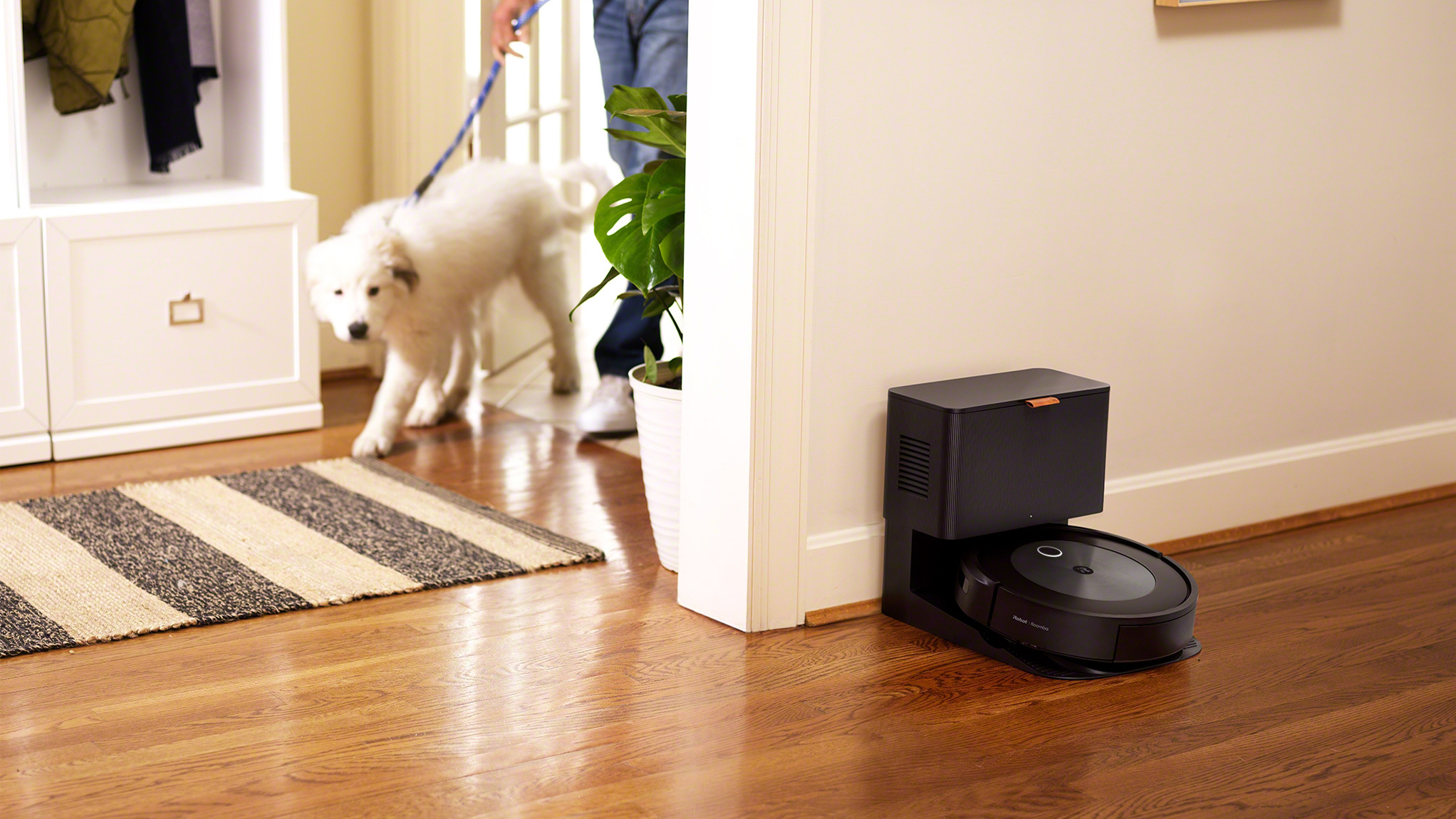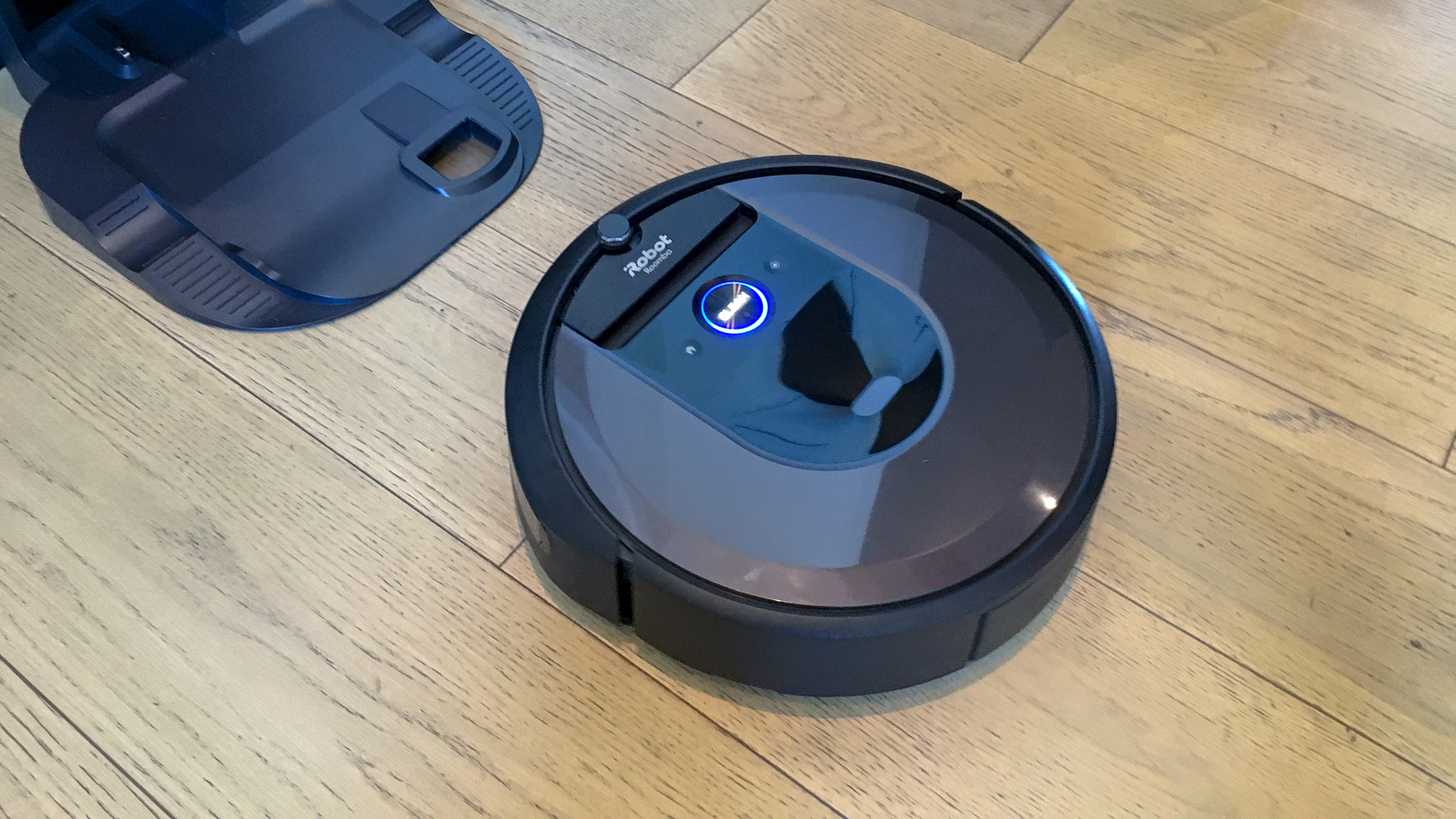Roomba i7 vs j7: which robot vacuum is best for you?
Roombas are among the best robot vacuum cleaners you can pick up. Which model should you buy?

iRobot’s Roombas are among the best robot vacuum cleaners you can buy, with more than two decades of cleaning experience. As you’ll see from our Roomba i7+ review and our Roomba j7+ review , the company's similarly named siblings have scored identical 4.5-star ratings. But there are some crucial differences between the two models, and their prices are different too. So which is better?
iRobot's robovac lineup can be confusing, and for a top-line overview of the main differences between all the different models, head to our guide to 'Which Roomba should I buy?' The Roomba J7+ sits between the i7+ and the Roomba S9+. It isn't as powerful as the S9+, but it and the i7+ deliver a very decent 1700Pa of cleaning power. We found that both did an excellent job of lifting dust and dirt from our floors.
In this guide, we’ll cover all the key differences between the iRobot i7+ and iRobot j7+; but if you’re in a hurry, then the main difference is that the j7+ has a front-facing camera while the unit on the i7+ sits on the top. That means the j7+ is better at avoiding obstacles, which is an important if you have pets at home.
Both Roombas are very clever devices that do an excellent job of cleaning hard floors and carpets, and we’d recommend the "plus" versions of each unless you’re on a tight budget: those models automatically empty themselves into their charging stations, so you don’t need to manually empty your Roomba after every few cleans.
Keep in mind that both are heavily discounted for Black Friday. So, be sure to check out the Roomba Black Friday deals so you can take price into consideration as well.
Roomba i7 vs j7: price
Both Roombas are available in two versions: the standard i7 and j7, and the i7+ and j7+. The standard and plus models are identical devices, but the plus models include an automatic emptying station.
The Roomba i7 costs $699 / £599.99 / AU$1499, while the i7+ is $949 / £799.99 / AU$1899 and comes with the Clean Base Automatic Dirt Disposal dock included.
Get daily insight, inspiration and deals in your inbox
Sign up for breaking news, reviews, opinion, top tech deals, and more.
The j7 is $599.99 / £699.99, while the j7+ is $799.99 / £899.99 / AUS $1,799.
Roomba i7 vs j7: design
The most important difference between the i7 and the j7 is that the latter has a front-facing camera that enables it to avoid obstacles, while the i7 only has a top-mounted camera and therefore is more prone to bumping into or running over things before correcting itself.
It’s worth pointing out that camera-based navigation needs a certain amount of light in order to function. If that’s an issue, you should look for a robot vacuum with LiDAR (light detecting and ranging) navigation instead.
Both Roombas are circular in shape, with improvements to the rubber rollers to make them better at picking up dirt. The dust bin has been improved, too, for easier manual or automatic emptying. You can’t adjust the suction power manually, but both devices can detect dirtier areas and increase the power accordingly. The brushes on both models of cleaner have been designed to avoid hair becoming wrapped around the roller – a common problem across some rivals. However, the dust bin in both models is relatively small at 400ml. If you buy the Plus version, the j7+’s home base is slightly smaller than that of the i7+, but it offers the same capacity: approximately 30 empties before you’ll need to change the bag.
Roomba i7 vs j7: power and battery life
Both cleaners here deliver 1,700Pa of suction power and come in at 65dB to 68dB for noise levels. Both models are rated for 75 minutes of use between charges, and will return to their charging station if they don’t have sufficient battery life remaining to complete a clean. Once recharged, they’ll continue cleaning from where they left off.
We were able to clean both floors of a three-bedroom house with one full charge – but, annoyingly, the battery level doesn’t offer a percentage of time remaining, so we had to take a guess over how much charge was left. It took two hours to fully recharge from zero.
Roomba i7 vs j7: features
Both devices feature cameras and floor sensors that enable them to learn the layout of your home and focus on the dirtiest areas. Both deliver control via the iRobot app, through which you have the option to clean individual rooms as well as a whole floor. You can also create no-go zones, where you don’t want your Roomba to roam. Both devices can also be controlled via your smart speaker. We found that it took roughly a week for the Roombas to fully map our home – although we found that if we changed or reset our Wi-Fi network, we had to get our Roombas to re-learn the layouts, which was mildly annoying.
If you’re a pet owner, the front-facing camera in the j7 could help avoid unpleasant messes: it comes with obstacle avoidance that its sibling lacks. Instead, the i7 uses touch to detect when it’s bumped into something – and if that’s a pet something, by that point it’s too late.
The j7 also wants to learn, so when it encounters a new obstacle it will send pictures of it to the iRobot app. You can then mark it as safe or as hazardous. The former means it will happily move it, but the j7 will steer well clear of anything marked hazardous.
Smart speaker integration is very good on both devices: you can use Google Assistant or Alexa to issue commands such as “Hey Google, clean the master bedroom” and your Roomba will obey instantly. And in our tests, we were able to completely clean two floors of a three-bedroom house without either Roomba requiring a recharge.

Roomba i7 vs j7: verdict
Neither of these robot vacuums is particularly cheap, but if you can afford the price tag (or if you can find a good deal – they’re both often discounted), both deliver very efficient and effective cleaning with little effort.
There’s very little practical difference between the two models, but we think that if you have pets at home then the J7’s front-facing camera is worth having: it’s better to prevent unfortunate accidents than to deal with their aftermath. We also prefer the plus models to the standard ones; manually emptying a Roomba is hardly a huge hassle, but it’s nice not to have to do it for days or weeks on end.
Writer, broadcaster, musician and kitchen gadget obsessive Carrie Marshall has been writing about tech since 1998, contributing sage advice and odd opinions to all kinds of magazines and websites as well as writing more than a dozen books. Her memoir, Carrie Kills A Man, is on sale now and her next book, about pop music, is out in 2025. She is the singer in Glaswegian rock band Unquiet Mind.
